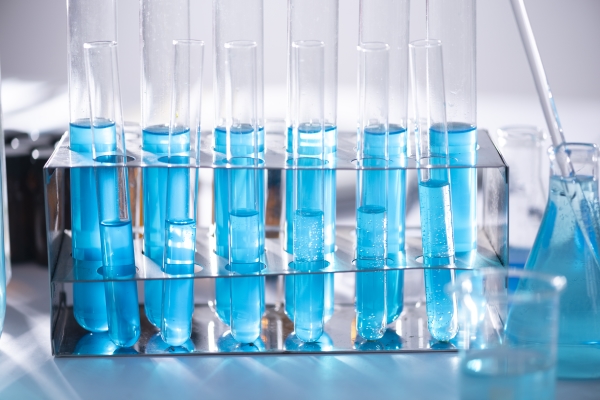Legionellosis is a collective term for diseases caused by legionella bacteria including the most serious legionnaires’ disease, as well as the similar but less serious conditions of Pontiac fever and Lochgoilhead fever. Legionnaires’ disease is a potentially fatal form of pneumonia and everyone is potentially susceptible to infection. The risk increases with age, but some people are at higher risk, e.g. people over 45, smokers and excessive users of alcohol, people suffering from chronic respiratory or kidney disease, diabetes, lung and heart disease or anyone with an impaired immune system.
The bacterium Legionella pneumophila and related bacteria are commonly found in natural water sources such as rivers, lakes and reservoirs, but usually in low numbers. The presence of Legionella spp. alone should not be regarded as a cause for alarm. It is only when levels proliferate in favourable conditions (i.e. when nutrients are available and when the water is stagnant), that problems arise.
Bacteria may also be found in purpose-built water systems, such as cooling towers, evaporative condensers and hot and cold-water systems. Conditions in the former encourage bacteria growth, the bacteria can multiply, increasing the risks of legionnaires’ disease, and therefore it is important to control the risks by introducing appropriate measures.
Legionnaires’ disease is normally contracted by inhaling small droplets of water (aerosols), suspended in the air, containing the bacteria.
Legionella spp. and L. pneumophila are listed among biological agents set out in the First Schedule of the Code of Practice for the Safety, Health and Welfare at Work (Biological Agents) Regulations, 2013 (S.I. No 572 of 2013) and are categorised as a ‘group 2 biological agent’, that is “one which can cause human disease and might be a hazard to employees, although it is unlikely to spread to the community and in respect of which there is usually effective prophylaxis or treatment available”.
In the United Kingdom, the Health and Safety at Work etc Act 1974 (the HSW Act) and the Control of Substances Hazardous to Health Regulations 2002 (COSHH) address the risk from exposure to legionella bacteria.
Conditions that increase the risk from legionella include:
- the water temperature in all or some parts of the system being between 20–50 °C, which is suitable for bacterial growth;
- it is possible for water droplets to be produced and dispersed;
- water is stored and/or re-circulated;
- deposits are present that can support bacterial growth, such as rust, sludge, scale, organic matter and biofilms;
- the presence of a high microbial concentration, including algae, amoebae, slime and other bacteria.
The Chartered Institute of Environmental Health (CIEH) maintains that a combination of warmer external temperatures and low use of water systems has created ideal conditions for legionella bacteria to grow. There is increased risk of legionella arising from lockdown and this risk is exacerbated by closed or reduced occupancy of buildings. Employers and people in control of premises, such as landlords and tenants, have a duty to identify and control risks associated with legionella.
It is essential that when buildings begin to re-open after lockdown that the risks are assessed before water systems are put back into use. All hot and cold-water systems must be considered; anywhere that has a water supply which is currently shut down or is experiencing restricted use poses an increased risk.
Legionella bacteria thrives between 20 and 50 degrees; one of the key control measures is to ensure your cold water is cold and your hot water is hot. The time for stagnation has increased across buildings unoccupied or with reduced use. Generally, where water is left within a system without movement for more than a week then the risk of growth will increase.
To militate against this companies must take steps to manage the risks of exposure to legionella. This includes an appropriate risk assessment and where the risks within the water system have changed, as they have now for a large number of systems, the risk assessment must be reviewed and revised. For simple hot and cold-water systems, a review should be straightforward. The main focus is to prevent stagnation and avoid water temperature in the risk area of 20 – 50 degrees. Guidance published by the CIEH recommends ensuring the turnover of any water stored in tanks every 24 hours where possible and movement of water through pipework and outlets should occur at least once a week to prevent it from becoming stagnant. If this is not possible, for example where the building is closed, additional steps are required, including consultation with water treatment specialists. Failure to manage the risks associated with legionella is a breach of health and safety legislation.
Legionella can cause Legionnaire’s Disease, a bacterial pneumonia. COVID-19 is a respiratory illness caused by the SARS-CoV-2 virus. Symptoms of Legionnaire’s Disease may appear similar to the symptoms of COVID-19. The American Industrial Hygiene Association (AIHA) has warned that individuals at high risk for severe illness from the SARS-CoV-2 virus are at the greatest risk of Legionnaire’s Disease. Those recovered from COVID-19 may have sustained respiratory damage that make them more susceptible to Legionella infection.








